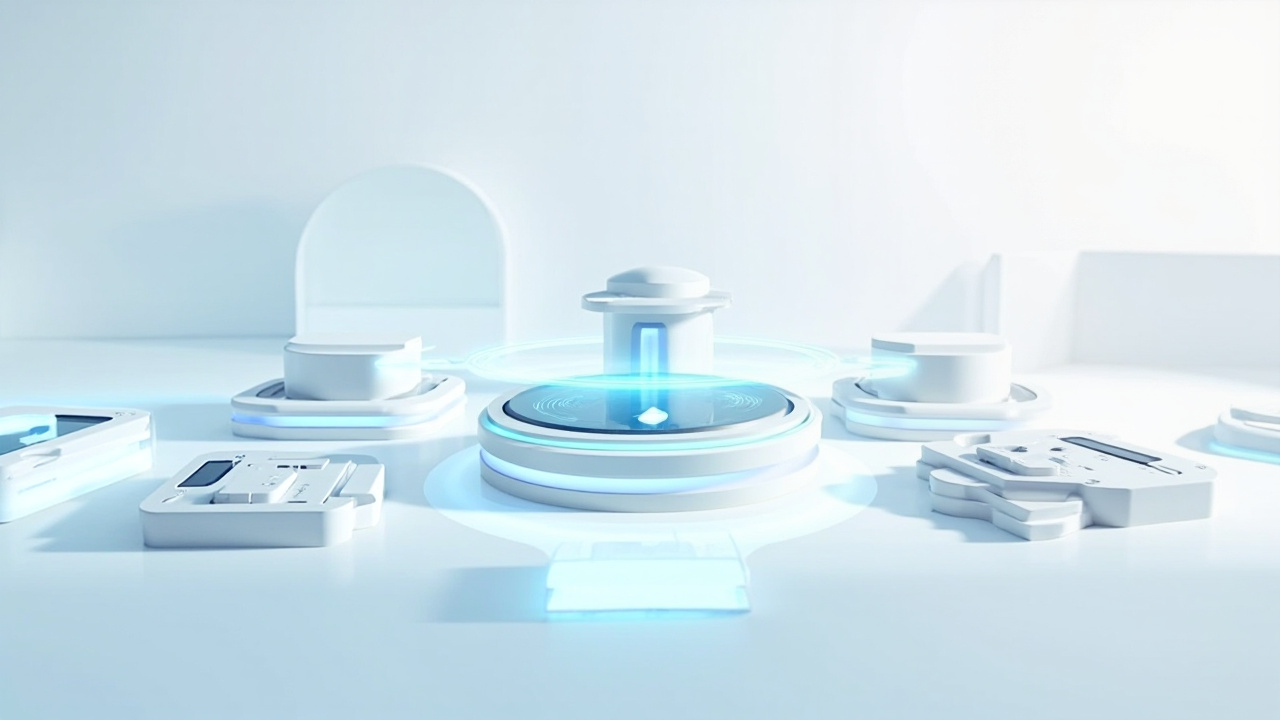In an era where artificial intelligence reshapes industries daily, the realm of AI chatbots stands out as both transformative and essential. As businesses and developers rush to integrate these intelligent conversational agents into their ecosystems, the urgency to ensure their effectiveness and reliability becomes paramount. But what does it mean to truly test an AI chatbot? What are the stakes, and how can one assure quality in a landscape that’s dynamically evolving?
Chatbots are no longer a novelty. They are critical components of customer service, healthcare, education, and numerous other fields. However, the complexity of human language presents unique challenges. Misinterpretations, lack of context understanding, and inability to handle nuanced conversations can lead to frustrating user experiences. The stakes are high; poorly functioning chatbots can damage a brand’s reputation and lead to financial losses.
In this comprehensive exploration, we’ll delve into the intricacies of AI chatbot testing. We’ll cover the core aspects of testing methodologies, explore real-world case studies, and provide actionable insights into building a robust testing framework. Whether you’re a developer, a business leader, or an AI enthusiast, this guide will equip you with the knowledge to navigate the complex landscape of AI chatbot testing.
Understanding the Foundations of AI Chatbots

To effectively test AI chatbots, one must first grasp their foundational elements. At their core, chatbots represent a fusion of linguistic algorithms and machine learning models designed to simulate human-like conversations. But what are the building blocks of these digital conversationalists?
The Anatomy of a Chatbot
A chatbot consists of several components: Natural Language Processing (NLP), machine learning models, and an interface for interaction. NLP allows the bot to understand and process human language, while machine learning models enable it to learn from interactions and improve over time. The interface, which could be a website chat window or a messaging app, is where users engage with the chatbot.
The NLP component is crucial as it involves tasks like tokenization, stemming, and semantic understanding to interpret user input. Machine learning models, often trained on vast datasets, help the chatbot predict the best responses based on historical data. The interface design impacts user engagement, making it essential to create intuitive and user-friendly interaction points.
A chatbot is only as effective as its ability to understand and respond to human language accurately.
The complexity of these components necessitates rigorous testing. It’s not merely about ensuring that the chatbot functions; it’s about ensuring it engages users in a meaningful and helpful manner.
Challenges in Chatbot Development
Developing a chatbot involves unique challenges. Natural language is inherently ambiguous, and users can express the same intent in countless ways. Additionally, cultural nuances, colloquialisms, and slang add layers of complexity. Understanding these subtleties is crucial for a chatbot to provide accurate responses.
Consider a healthcare chatbot. It must accurately interpret symptoms described by users, which requires a deep understanding of medical terminology and the ability to distinguish between similar symptoms. This level of sophistication demands meticulous design and exhaustive testing. The chatbot must also comply with regulations like HIPAA to protect patient information, adding another layer of complexity.
Moreover, chatbots must be designed to handle unexpected inputs gracefully. Failing to manage out-of-scope questions or offensive language can lead to user dissatisfaction. Thus, training chatbots to recognize and appropriately respond to such scenarios is essential.
The Importance of AI Chatbot Testing

With their increasing prevalence, chatbots are expected to perform reliably and efficiently. Testing is not just a technical necessity; it’s a strategic imperative. But why is testing so crucial, and what are the potential pitfalls of inadequate testing?
Ensuring Reliability and Performance
Reliability is the cornerstone of user satisfaction. A reliable chatbot not only responds accurately but also handles unexpected inputs gracefully. Performance testing evaluates how a chatbot responds under different conditions, such as high user traffic or varied input types.
Performance testing involves scenarios like stress testing, where the chatbot is subjected to high loads to assess its stability. Load testing, on the other hand, determines the maximum number of concurrent users the chatbot can handle before performance degrades.
Inadequate testing can lead to critical failures, damaging user trust and brand reputation.
A chatbot that freezes or provides incorrect information during peak hours can lead to user frustration and lost opportunities. Thorough testing ensures that the bot performs optimally across various scenarios. For instance, a financial chatbot must handle simultaneous queries about account balances or transactions without error.
Addressing Ethical and Bias Concerns
AI systems, including chatbots, are susceptible to biases present in training data. These biases can lead to unfair or inappropriate responses. Ethical testing involves examining and mitigating these biases to ensure the chatbot treats all users equitably.
For instance, a recruitment chatbot must be free from biases related to gender, race, or age to provide fair candidate assessments. Testing for bias involves analyzing response patterns and making necessary adjustments to the training data. Implementing fairness-aware algorithms and conducting regular audits can help in identifying and reducing bias.
Furthermore, ethical considerations extend to data privacy. Ensuring that chatbots do not inadvertently leak sensitive information is critical. Compliance with data protection regulations like GDPR is essential to maintain user trust.
Testing Methodologies: From Unit Tests to User Acceptance

Testing AI chatbots encompasses various methodologies, each serving a specific purpose. From unit tests to user acceptance tests, understanding these methods is crucial for comprehensive evaluation.
Unit Testing: The Building Block
Unit testing focuses on individual components of the chatbot. By isolating and testing specific functions, developers can identify and fix issues at an early stage. This approach ensures that each part of the chatbot works as intended before integrating it with the larger system.
Unit tests might involve checking the NLP component’s ability to parse complex sentences or ensuring that machine learning models predict correct responses. By breaking down the chatbot into smaller testable units, developers can pinpoint failures quickly.
Think of unit testing as the preliminary checkup that ensures each cog in the machine functions correctly.
For example, testing the NLP component separately from the machine learning model helps pinpoint specific areas that may require refinement. Additionally, unit testing can verify the accuracy of intent recognition and entity extraction, which are crucial for understanding user input.
Integration Testing: Ensuring Cohesion
Integration testing evaluates how different components of the chatbot work together. It’s about ensuring that the NLP, machine learning models, and user interface function harmoniously. This phase identifies any issues that arise from component interactions.
A chatbot that can perfectly understand language but fails to retrieve answers from its database highlights the importance of integration testing. It’s essential to ensure that all parts of the chatbot communicate effectively. Integration tests might involve simulating real-world scenarios to ensure seamless data flow and response generation.
Moreover, integration testing can help uncover issues related to API calls or third-party service integrations, which are common in chatbots that rely on external data sources.
User Acceptance Testing: Real-World Validation
User acceptance testing (UAT) involves real users interacting with the chatbot in a controlled environment. This phase provides valuable insights into how users perceive and interact with the chatbot. It highlights usability issues and areas for improvement.
In a customer service setting, UAT might reveal that users find the chatbot’s responses too robotic. This feedback is invaluable for refining the chatbot’s conversational style. UAT can also uncover gaps in the chatbot’s knowledge base, prompting updates to enhance its capabilities.
User acceptance testing bridges the gap between technical functionality and user experience, ensuring the chatbot meets real-world expectations.
During UAT, users might also provide feedback on the chatbot’s ability to navigate complex conversations or its handling of ambiguous queries. This feedback can guide further development and optimization.
Leveraging Automation in Chatbot Testing

Automation is transforming the landscape of software testing, and chatbots are no exception. Automated testing offers numerous benefits, from increased efficiency to improved accuracy.
The Role of Automation
Automation involves using software tools to execute tests automatically. For chatbots, this can include testing conversation flows, response accuracy, and performance under various conditions. Automated testing reduces the time and effort required for manual testing, allowing developers to focus on more complex tasks.
Automated tests can be run continuously, providing immediate feedback on code changes. This continuous integration and testing approach ensures that new features or updates do not introduce regressions or errors.
Automated testing is the backbone of efficient and comprehensive chatbot evaluation.
Tools and Frameworks
Various tools and frameworks facilitate automated chatbot testing. These tools can simulate user interactions, test conversation flows, and evaluate response accuracy. Popular frameworks include Botium, which offers a comprehensive suite for testing chatbot functionality.
Using these tools, developers can simulate thousands of user interactions to evaluate how the chatbot performs under different scenarios. This level of testing ensures that the chatbot is robust and ready for deployment. Other tools like Chatbot Testing Framework (CTF) and TestMyBot offer similar capabilities, allowing for scalable and repeatable testing processes.
Furthermore, these tools often provide analytics and reporting features, enabling developers to track performance metrics and identify areas for improvement.
Balancing Automation and Manual Testing
While automation is powerful, it’s not a substitute for manual testing. Manual testing provides insights into user experience and interaction nuances that automated tests may overlook. A balanced approach, combining both automated and manual testing, ensures comprehensive evaluation.
Manual testing can focus on exploratory testing, where testers simulate user behavior to identify unexpected issues. It also allows for testing the chatbot’s ability to handle rare or unusual inputs that automated tests may not cover.
A balanced testing strategy leverages the efficiency of automation while preserving the depth and insight of manual evaluation.
By integrating manual testing with automation, developers can achieve a holistic understanding of the chatbot’s performance and user experience.
Real-World Case Studies: Lessons from Industry Leaders

Examining real-world case studies provides valuable insights into successful chatbot testing strategies. Industry leaders offer lessons on effective testing methodologies and common pitfalls to avoid.
Case Study: E-commerce Chatbot Success
An e-commerce giant implemented a chatbot to streamline customer service operations. The chatbot was designed to handle common queries, process orders, and provide product recommendations. Rigorous testing, including load testing and user acceptance testing, ensured the chatbot performed seamlessly during peak shopping seasons.
This case study highlights the importance of performance testing in a high-traffic environment. The company also conducted ethical testing to ensure unbiased product recommendations, enhancing customer trust and satisfaction.
The e-commerce chatbot was integrated with the company’s inventory and order management systems, requiring thorough integration testing to ensure data consistency and accuracy. The chatbot’s training data was regularly updated to reflect the latest product offerings and promotions, maintaining its relevance and effectiveness.
Real-world case studies offer practical insights into effective chatbot testing strategies and common pitfalls.
Case Study: Healthcare Chatbot Challenges
A healthcare provider developed a chatbot to assist patients with symptom checking and appointment scheduling. The complexity of medical terminology posed significant challenges. Extensive unit and integration testing ensured the chatbot accurately interpreted medical inputs.
Despite these efforts, user feedback during UAT revealed issues with conversational tone and empathy. This feedback prompted additional refinements to improve user experience, demonstrating the importance of user acceptance testing in sensitive applications.
The healthcare chatbot’s development team also conducted bias testing to ensure it provided unbiased advice regardless of demographic factors. Continuous monitoring and updates were necessary to ensure the chatbot’s medical knowledge remained current and accurate.
Future Trends in AI Chatbot Testing

As AI technology evolves, so too do the methodologies and tools for testing chatbots. Understanding future trends can help developers and businesses stay ahead of the curve.
Embracing AI-Driven Testing
AI-driven testing involves using AI algorithms to automate and enhance testing processes. These intelligent systems can learn from past interactions, identify patterns, and predict potential issues, offering a more nuanced approach to testing.
AI-driven testing tools can simulate complex conversation scenarios, detect anomalies, and optimize test coverage. They can also generate synthetic data to test chatbot responses to rare or edge-case inputs.
AI-driven testing represents the next frontier in chatbot evaluation, promising greater accuracy and efficiency.
The Rise of Conversational Intelligence
As chatbots become more sophisticated, testing will focus on conversational intelligence. This involves evaluating a chatbot’s ability to understand context, manage dialogue, and exhibit emotional intelligence. These factors are crucial for creating engaging and human-like interactions.
Testing for conversational intelligence involves assessing the chatbot’s ability to maintain context across multi-turn conversations, recognize user emotions, and adapt its responses accordingly. This level of testing ensures the chatbot can engage users in meaningful dialogues.
Continuous Testing and Feedback Loops
Continuous testing involves integrating testing processes throughout the development lifecycle. This approach ensures that issues are identified and addressed promptly, leading to more robust and reliable chatbots.
Feedback loops, where user interactions inform ongoing testing and development, will become increasingly important. This iterative process ensures chatbots evolve to meet changing user needs and expectations.
Continuous testing and feedback loops create a dynamic development environment, enabling chatbots to adapt and improve over time.
Developers can leverage user feedback to refine conversation flows, update knowledge bases, and enhance the chatbot’s overall performance and user experience.
Conclusion: Empowering the Next Generation of Chatbots

AI chatbots are revolutionizing how we interact with technology, and effective testing is critical to their success. By understanding the intricacies of chatbot development and employing comprehensive testing strategies, developers can create chatbots that are reliable, engaging, and ethically sound.
As we move forward, embracing automation, leveraging real-world insights, and anticipating future trends will empower us to build the next generation of chatbots. These digital assistants will not only meet user expectations but exceed them, offering seamless interactions that enrich our digital experiences.
Are you ready to explore the fascinating world of AI chatbot testing further? Dive deeper into the methodologies, tools, and trends shaping this dynamic field, and discover how you can contribute to the future of conversational AI.
Explore More on This Topic
Interested in diving deeper into this subject? Connect with experts or explore additional resources to expand your understanding.
If the link above does not work, please visit: https://calendly.com/dm-csimplifyit/30min?month=2025-05